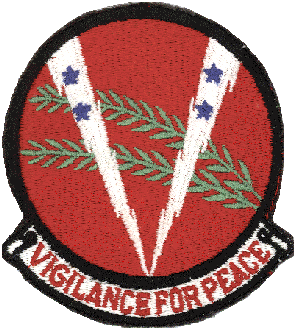 |
524th Bombardment Squadron Insignia
|
Station
|
|
Geiger Field, Washington
|
3 Nov 1942
|
|
Wendover Field, Utah
|
2 Dec 1942
|
|
Sioux City AAB, Iowa
|
2 Feb - 9 Apr 1943
|
|
Kimbolton, England
|
20 May 1943 - 16 Jun 1945
|
|
Casablanca, French Morocco
|
17 Jun - 25 Jul 1945
|
|
Homestead AFB, Florida
|
1 Nov 1955 - Dec 1960
|
|
Wurtsmith Air Force Base
|
9 January 1961
|
|
Deactivated
|
2 December 1992
|
|
Assignment
|
|
379th Bombardment Group
|
3 Nov 1942 - 25 Jul 1945
|
|
379th Bombardment Wing
|
1 Nov 1955 - Sep 1992
|
|
Aircraft
|
|
B-17
|
1942 - 1945
|
|
B-47
|
1956 - 1960
|
|
Boeing B-52H Stratofortress
|
9 May 1961 - July 1977
|
|
Boeing B-52G Stratofortress
|
2 May 1977 - 2 December 1992
|
The 524th BMS has an impressive heritage that tracks back to World War II
when the squadron was first activated as part of the 379th Bombardment Group in
1942. Flying B-17s, squadron crews spent 23 months in combat over Europe. They
earned the group two Distinguished Unit Citations before inactivation in 1945.
The 524th BMS was reactivated as a medium bombardment squadron flying B-47s
under SAC expansion in the 1950s. In 1961, the squadron converted to a heavy
bomb squadron flying B-52s. Through its history, the 524th has earned
distinguished honors in combat and peacetime operations that set a winning pace
for other bomb squadrons to follow.
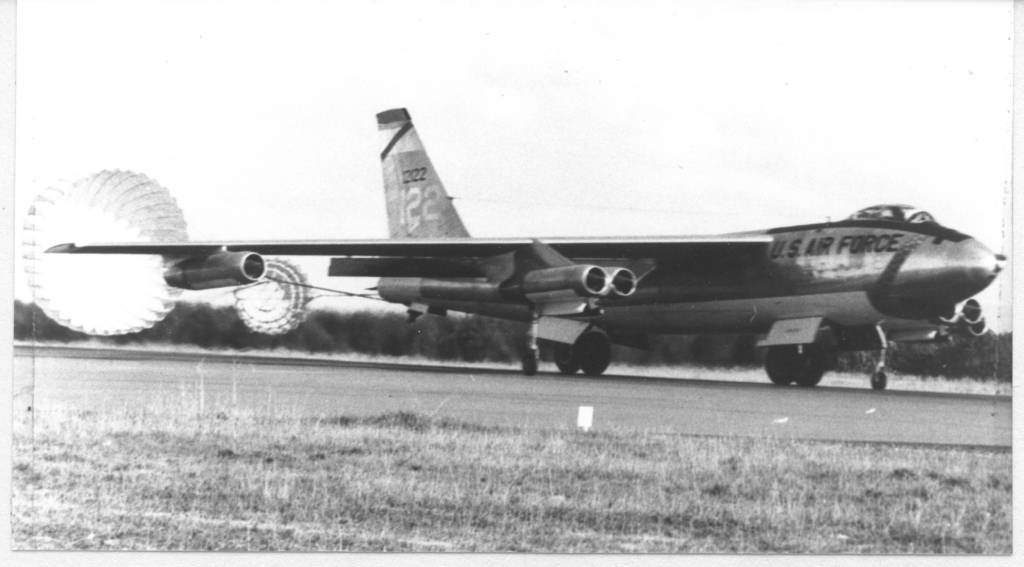
A 379th Bombardment Squadron (Medium) Boeing B-47 Stratojet sets down after
a mission. - photo contributed by Maj Andy Bloom
|
The mission of the 524th Bombardment Squadron did not changed substantially
from the time the squadron became part of the Strategic Air Command's 379th
Bombardment Wing in 1955 until its deactivation in December of 1992. That
mission was to maintain full readiness to conduct worldwide strategic bombing
operations given a Presidential order.
The commander of the 524th BMS was responsible to the 379th Bombardment Wing
deputy commander for operations. B-52 crews assigned to the squadron alternate
between training flights, squadron responsibilities and alert duties to maintain
combat-readiness.
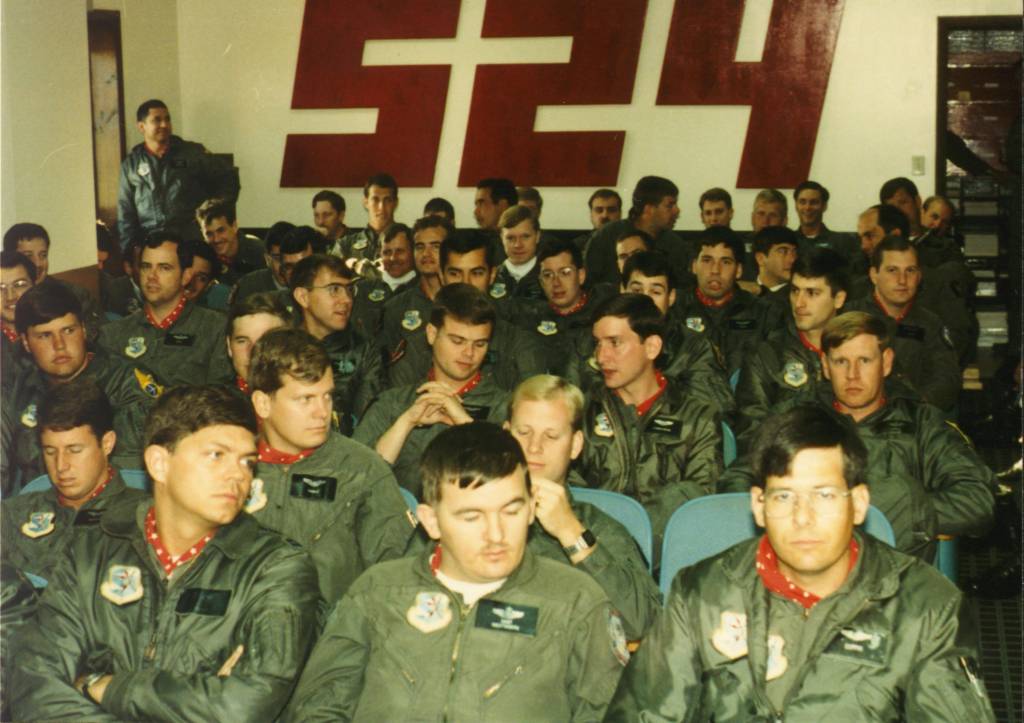
The squadron prepares for an Operational Readiness Inspection (ORI) - Photo
by Maj Andy Bloom
|
The 524th BMS became the first SAC unit to operate the B-52H model
Stratofortress taking delivery of aircraft 60-001 on 9 May 1961. The was
christened the "State of Michigan" in a ceremony on the flightline on May 11th
by Miss Donna Jean Shepperd, Miss Michigan 1961. Five months later, the unit
would begin receiving the AGM-28B "Hound Dog" Air-to-Ground missile.
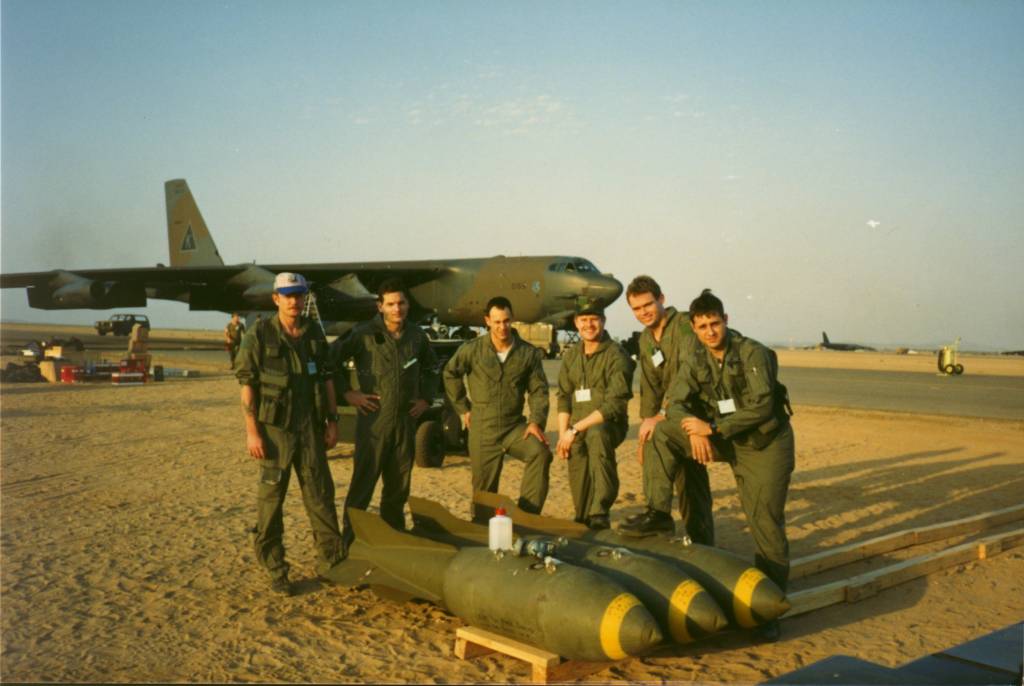
"Old Crow Express" with her crew following 53 missions in Operation Desert
Storm.
|
On 2 May 1977 the 524th BMS began a conversion to the B-52G model. It has a
wing span of 185 feet and a fuselage length of 160 feet, and is powered by eight
turbojet engines capable of delivering 13,750 pounds of thrust each. As a
high-speed weapons system, the B-52 has both a conventional and nuclear
capability. It can be armed with gravity weapons, as well as a combination of
short range attack missiles (SRAMs), and air-launched cruise missiles
(ALCMs).
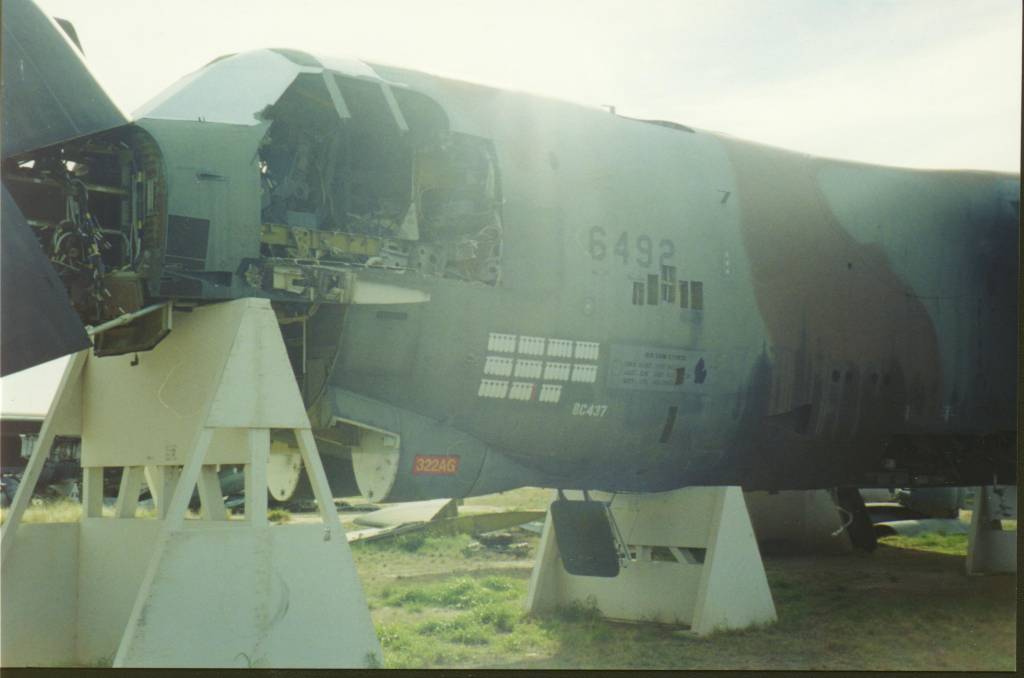
"Old Crow Express" retired to AMARC in 1992. It appears that her nose
artwork was preserved - photo by Maj Andy Bloom
|
The 524th's insignia consists of a red disc bordered black, two green olive
branches arched bendwise throughout, surmounted by two white lightning flashes
throughout, issuing from dexter and sinister chief respectively and covering in
center base, each charged with two Air Force blue stars in chief, one above the
other. Motto: On a white, edged black, VIGILANCE FOR PEACE, inscribed red which
reflects the unit's dedication and commitments to maintaining peace and freedom
as part of our country's armed forces.
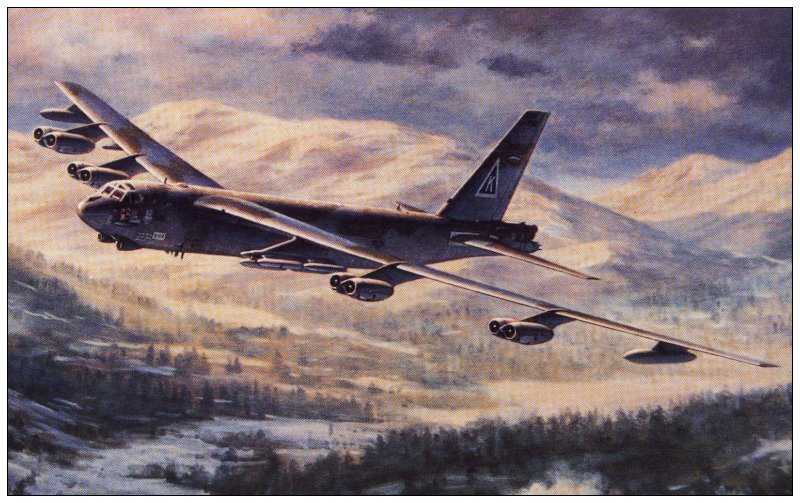
Although she will never be seen again in the skies, "Old Crow Express" lives
on in the 1985 artwork entitled "Soldiering On" by Ronald
Wong
|